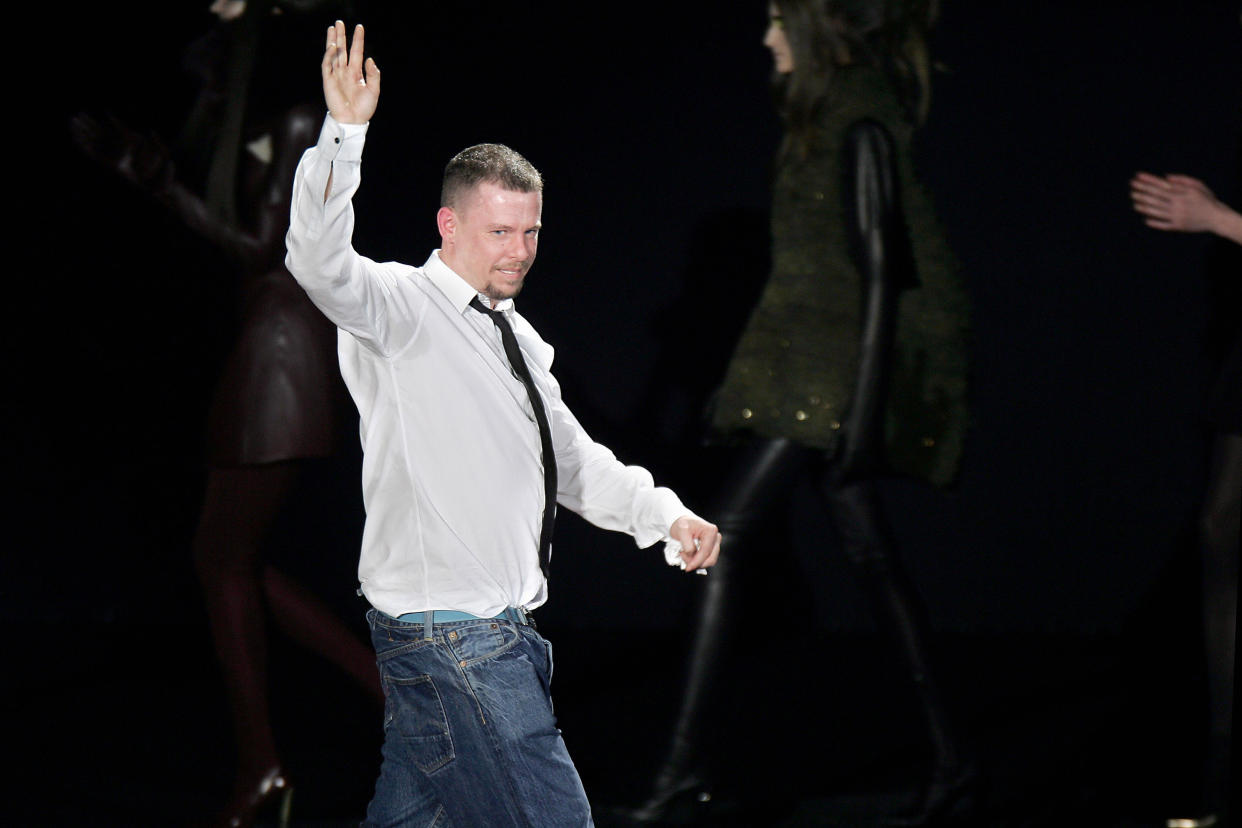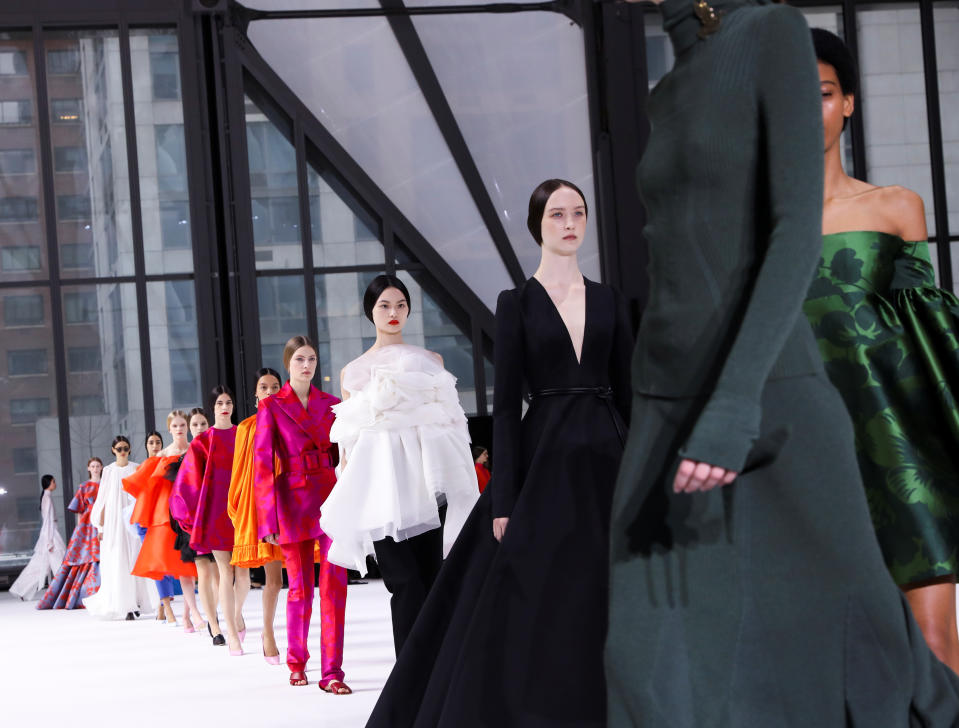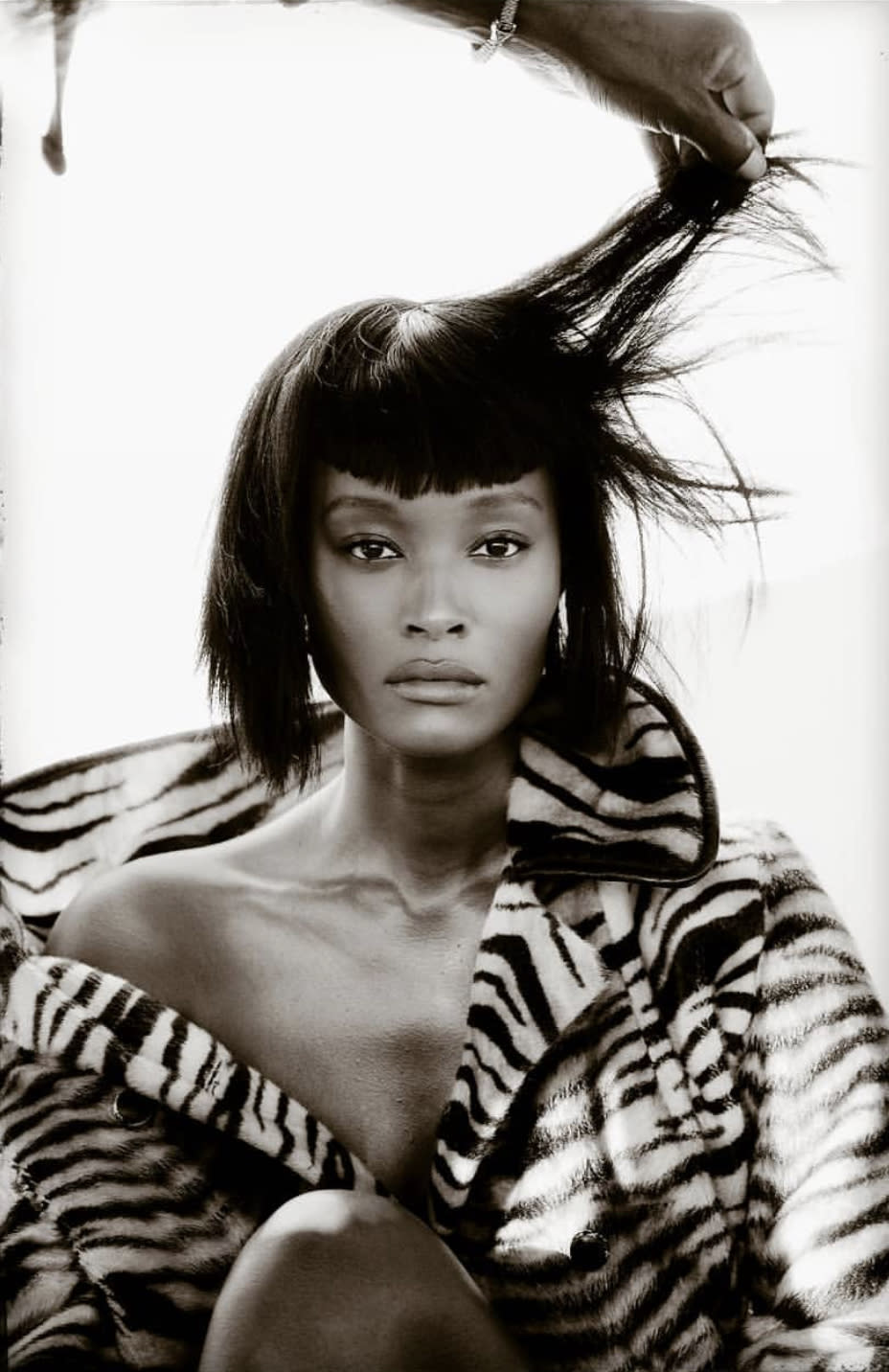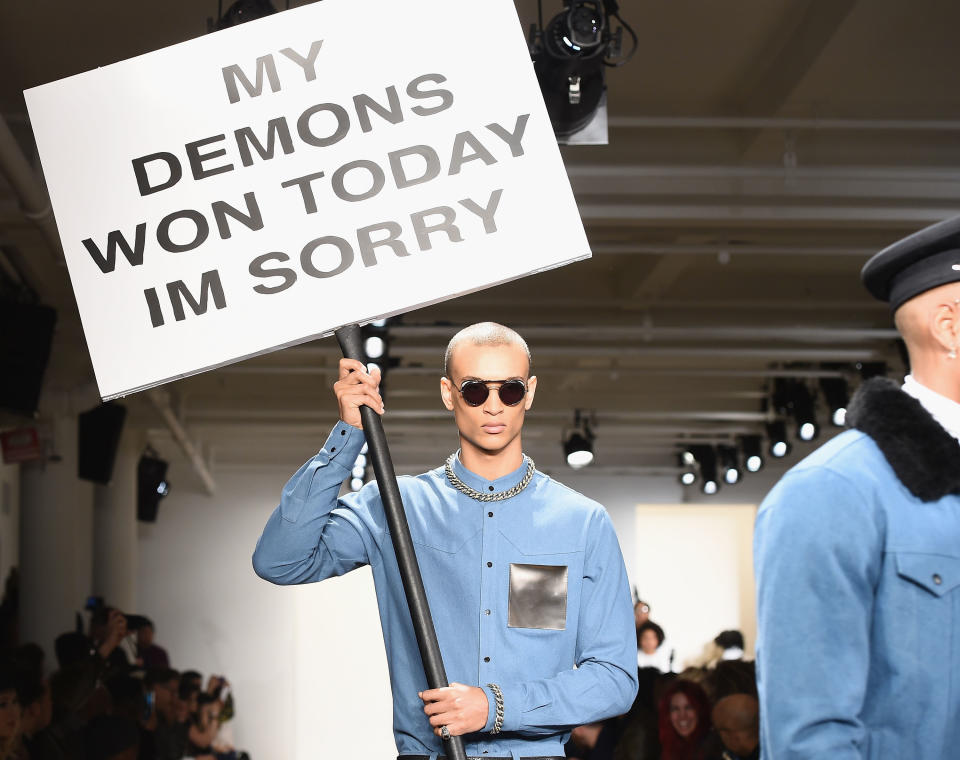10 years after Alexander McQueen’s death by suicide, a look at mental health in the fashion world

Feb. 11, 2010 was a Thursday, and the first day of New York Fashion Week. But just as the latest creations were hitting the runway, devastating news was dispatched from abroad: Alexander McQueen — the British designer whose eponymous fashion house and daring garments had ignited the industry and found firm fans in stars like Sarah Jessica Parker and Lady Gaga — had been found dead, by suicide, in his London home. He was 40.
The loss of such a bright talent can’t be overstated. In the decade since his death, McQueen — known to friends as Lee, his actual first name — has been memorialized in a 2018 documentary, McQueen, and inspired the hugely successful Savage Beauty exhibition. And under the direction of his longtime collaborator Sarah Burton — who succeeded him as creative director and oversaw the presentation of his final collection just a month after his death — his sartorial legacy has endured, with Kate Middleton turning to his luxury label to design her wedding dress in 2011.

But beyond the glamour — the red carpet gowns, Kate Moss holograms and notoriously vertiginous armadillo shoes — the so-called “l’enfant terrible” has also left an indelible mark on the fashion world because of the way he left it.
While myriad factors, including the very recent loss of his mother, substance abuse, and what was diagnosed as mixed anxiety and depressive disorder, played a role in McQueen’s death by suicide, his personal turmoil has sparked a conversation about mental health in the fashion industry. It’s a conversation that spiked in 2014, following the death by suicide of 49-year-old American womenswear designer L’Wren Scott, following a period of depression, and then again in June 2018, when 55-year-old Kate Spade, who had also battled anxiety and depression, took her own life.
Related Video: John Galliano ‘Understood’ Pain of McQueen Before Suicide
A decade later, as New York Fashion Week once again holds court, McQueen’s death and those that followed continue to weigh heavily on the industry. It’s an environment, designers tell Yahoo Lifestyle, filled with intense scrutiny and pressure, from financial instability to creative burn-out, which can sometimes trigger anxiety and depression. Here, industry insiders open up about how the desperation to be the next McQueen can have some dark pitfalls — and how the community has evolved to make the topic of mental health less taboo.

Designers under duress
According to a 2018 report released by the Centers for Disease Control and Prevention (CDC) and based on data from 2015, the occupational group with the highest suicide rates among women was Arts, Design, Entertainment, Sports and Media. For men, that occupational group came second, behind Construction and Extraction. Though Barbara Greenberg, a clinical psychologist based in Connecticut, cautions that research into whether creative professionals are more prone to depression is mixed, and notes that not every person who dies by suicide has a history of anxiety or depression, she acknowledges that the work can come with “amazingly high and unrealistic expectations.”
“You’re only as good as your last show, your last painting, your last book, your last creation,” she tells Yahoo Lifestyle. “You’re only as good as your last success. So there’s this pressure in this field to continue getting good reviews, and that’s exhausting, and it’s a major source of bruised feelings. People in the arts are not necessarily judged privately like most of us are, but they’re judged by a large public audience. And there’s a lot of commentary, which is very critical. Their work is very scrutinized, and the responses from people can be very inconsistent.”
Greenberg continues, “They can have one fashion show that’s superb and gets lots of accolades, and then they’re expected to have their next show or the next creation be just as good. But it’s almost impossible to maintain that consistency, and the thing is, it’s very subjective... The expectations are so great and you constantly have to prove yourself, over and over again.”
“An emotional rollercoaster”
As a model —and winner of America’s Next Top Model’s Cycle 6 — who turned to design with the launch of her hat label, Monrowe, Dani Evans knows that sense of insecurity and “pressure to one-up” all too well.
“You’re just bombarded with comparisons and cash-flow issues,” she tells Yahoo Lifestyle of the fashion business, which is populated with freelancers and independent contractors who, she says, are often unprepared for the financial responsibilities, such as taxes and late payments, that come with what they expect to be creative work.

Coming off her reality show win in 2006, Evans was stunned to find that being a professional model didn’t meet her expectations. “I had this, like, public notoriety, but my bank account didn’t match up to that,” she says, noting the countless rejections and financial struggles she faced after moving to New York City. In 2017, she launched Monrowe, anticipating that being a designer and running her own brand would help her feel more established. And while the label has received the kind of support some designers only dream of — a store exclusive, the opportunity to create a hat for an Oprah Winfrey magazine cover — the difficult issues Evans dealt with as a model have only continued.
“I did that so I could have more control, but it’s still fashion at the end of the day,” she says. “I didn’t realize until I got into it. Building a brand is extremely difficult, and there’s a lot that you have to learn and a lot that goes into it other than just having an idea. I had my work cut out for me. So it was a rude awakening when I realized, ‘Oh, this is not going to be like an overnight success type of thing.’
“When I started Monrowe, I envisioned it doing a lot better than where it is,” she admits. “And it’s not that I haven’t had success, because I definitely have... I’ve had success, and I’ve had customers and stuff, but for me, being a model and then branching off and doing my own thing by being a designer, it was very reminiscent of my 14-year career in modeling. Even when I made the exclusive for this store in L.A., I was waiting for the payment.”
All of this took a toll on her mental health. Just two years ago, Evans — after a battery of tests, consultations with various doctors and thousands of dollars in medical bills — was diagnosed with panic attacks, which she now “gets ahead of” by meditating first thing every morning and limiting her time on social media, “the driving force for a lot of mental health issues.” She also sets boundaries when it comes to her fashion business, including resisting pressure from buyers to design new collections each season. Between fall/winter, spring/summer, cruise/resort, pre-fall and couture, many designers and their teams are breathlessly producing fresh collections year-round.
“I’ve told myself and others that I’m not following the fashion calendar,” she says. “I’m not going to allow anyone else to set quotas for me where I have to create so many different hats twice a year. That’s insane, because at the end of the day, what am I going to do with these hats if I’m not selling them? There comes a point where you have to just put your foot down because if you don’t, you feel like a slave to the industry.
“I know for a fact that these designers don’t sleep, their eating habits are probably not the best, and they’re working round-the-clock to produce something to stay relevant,” she adds of the “toxic cycle” in the industry. “You walk the runway and then it’s done, and you check the reviews because you want to make sure the collection did great, and what if you get a few bad reviews? It’s a set-up for you to burn out really quickly.”
Similarly, Sabrina (not her real name), a designer who recently launched her own label after working for several well-known fashion houses in New York City and London, agrees that the “rigid” fashion calendar creates a lot of stress. She says designers work themselves into the ground creating new collections, which enjoy just a few minutes of glory on the runway before the team has to start from scratch and begin working on the next collection.
“Designers are constantly adhering to buyers’ schedules for seasons, which over the years have led to added seasons, shorter lead times, quicker turnarounds and less time to actually be creative, which is sad,” she tells Yahoo Lifestyle, adding that the process can force creative talents to “lose authenticity” by focusing on “selling rather than the art.”
“It's an emotional rollercoaster,” she continues. “The lead-up to Fashion Week always has to be the most intense time when emotions are running wild for everyone. This is when everyone is already burnt out but digs deep and somehow struggles through on weeks of four to six hours of sleep, if that, while also working obscene hours to meet the tight deadlines due to the fact that they are all working in separate departments trying to coordinate to achieve a common goal. Sadly, on minimal sleep, mistakes are bound to happen, and emotions are intense, resulting in tears, tempers, apologies and things people would normally not say or do in a more controlled, relaxed environment.
“I think it tends to breed an environment for anxiety and depression to flourish because the crazy hours, sleepless nights and lack of self-care are considered the norm for the industry,” she adds. “It is almost like a rite of passage while moving up the ranks to see if you are able to cope.”

Raising awareness
In 2018, the Council of Fashion Designers of America (CFDA), the trade association representing hundreds of American designers, established an expanded Initiative for Health, Safety, and Diversity committed to protecting models from sexual harassment and abuse, encouraging the casting of models of color, and promoting wellness and raising awareness about eating disorders. While that last mission has a mental health component — models who are found to have eating disorders are required to seek professional treatment — the initiative otherwise has no specific guidelines addressing issues like anxiety or depression within the industry.
That said, the CFDA, which did not respond to Yahoo’s request for comment, has staged events seeking to raise awareness about mental health; those events, according to a 2019 WWD article about brands taking part in Mental Health Month last May, appear to have taken on a new urgency in the year-plus since Kate Spade’s death by suicide. Shortly after her death, the Kate Spade Foundation announced it would donate $1 million to suicide prevention and mental health awareness causes, in addition to launching a Global Mental Health Awareness Day for employees.
The mental health conversation has, on occasion, also hit the catwalk, albeit with mixed results. Kerby Jean-Raymond of Pyer Moss was praised for using his Fall 2016 show — complete with “Why so blue” signs and Prozac buttons — to shine a spotlight on depression, a topic he felt had been “swept under the rug.” Last September, however, Gucci’s controversial straitjacket-style jackets, which designer Alessandro Michele said were meant to symbolize conformity and restriction, prompted one of the label’s own models to offer up a silent protest by holding up palms scrawled with the message, “Mental health is not fashion.”
Getting help
The insiders Yahoo Lifestyle spoke with agree that, while the topic of mental health is less of a taboo these days, there is still a stigma that keeps many from speaking openly about their emotional wellbeing, particularly with their employers, HR reps or agents.
“People are afraid to involve a party that could be seen as part of the workforce, so they don’t want to go through their agency to express these needs if they feel like they’re going to be judged,” says Kristina Romanova, a model who co-founded the Humans of Fashion Foundation (HOFF) with fashion law expert Antoniette Costa.
The foundation stages events and has a video series called the HOFF Academy, which sees fashion folks opening up about their experiences with some of the less glamorous aspects of the business. In one video, Sports Illustrated Swimsuit Issue model Nina Agdal spoke about her battle with anxiety.
But HOFF’s main mission is to provide fashion industry figures with a network of support. By going online or using the HOFF app, models and designers can be connected to legal and mental health professionals offering their services for free (via the Fashion Law Institute and Give an Hour, respectively). Romanova and Costa tell Yahoo Lifestyle that the process offers those in need some much-desired anonymity.
The co-founders also feel that the industry should offer more institutional support to help creatives cope with pressures like building a social media following (which Costa says can “exacerbate” mental health issues), meeting deadlines and answering to financial investors. But they acknowledge that it’s difficult to implement industry-wide guidelines, given that so many designers work independently as freelance contractors, without the infrastructure or support of a corporate brand. Until then, they’re hopeful that their events and videos will spark “more communication among a cross-section of the industry” so that agents, creatives and models can more constructively address the issues that trigger so much stress.
Many cite the importance of finding mentors as a source of support and sounding board. But as a mental health therapist, Greenberg says it’s important to recognize the need for professional help.
“If they feel burnt out, emotionally depleted, very pessimistic and they just can’t function in a healthy way, they really should seek mental health treatment — and also treatment from a medical doctor as well, because you can work yourself into getting physically ill too from stress,” she says.
Evans, whose own diagnosis led her to establish coping techniques that have helped her better “visualize success,” agrees that mental health has to come before clothes, whether you’re a designer just starting out or a runway star who’s the toast of Milan.
“Getting a hold on your mental state is so much more important than creating a collection,” she says. “Because you can’t pour from an empty cup.”
If you or someone you know are experiencing suicidal thoughts, call 911, or call the National Suicide Prevention Hotline at 1-800-273-8255 or text HOME to the Crisis Text Line at 741741.
Read more from Yahoo Lifestyle:
Ashley Graham breastfeeds her baby in sweet new family photo: ‘What a goddess’
Elizabeth Warren 'never' washes her face — here’s what she does instead
PETA cancels star-studded ‘I’d Rather Go Naked Than Wear Fur’ campaign
Follow us on Instagram, Facebook and Twitter for nonstop inspiration delivered fresh to your feed, every day.
Want daily pop culture news delivered to your inbox? Sign up here for Yahoo Entertainment & Lifestyle's newsletter.

